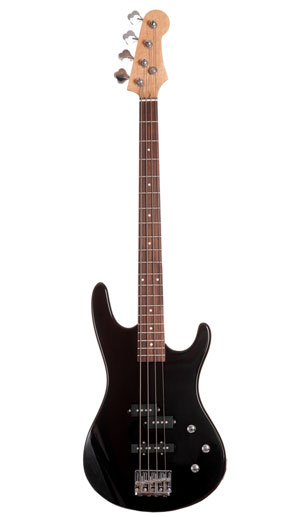- (0)20 3929 9046 (sales only)
OCR
Here's a list of GCSE lessons, current February 2022. All have auto-marked listening tests. Many have extended writing exercises with model answers.
| OCR GCSE Lessons Feb. 2022 | |
|---|---|
| OCR - Concerto grosso | OCR - Harmony terms |
| OCR - Baroque solo concerto | OCR - Harmony terms 2 |
| OCR - Classical concerto | OCR - Chords |
| OCR - Mozart piano concerto | OCR - Cadences |
| OCR - Romantic concerto | OCR - Modulations |
| OCR - Film music lesson | OCR - Structure |
| OCR - Latin American rhythms | OCR - Structure 2 - pop songs |
| OCR - Latin American rhythms 2 | OCR - Structure 3 |
| OCR - Samba instruments | OCR - Rhythm terms |
| OCR - African rhythm | OCR - Rhythm terms 2 |
| OCR - Indian rhythm | OCR - Texture terms |
| OCR - Rock n Roll | OCR - Texture terms 2 |
| OCR - Melodic terms | OCR - Articulation |
| OCR - Melodic terms 2 | OCR - Gap filling tests |
Here are screenshots for the GCSE syllabus:
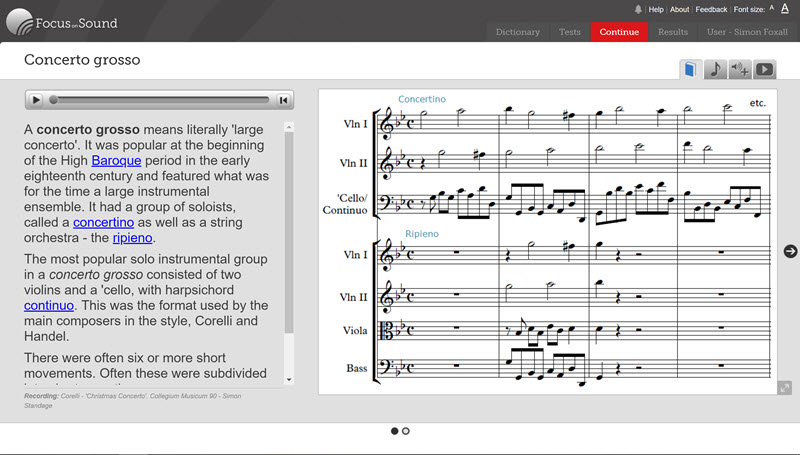
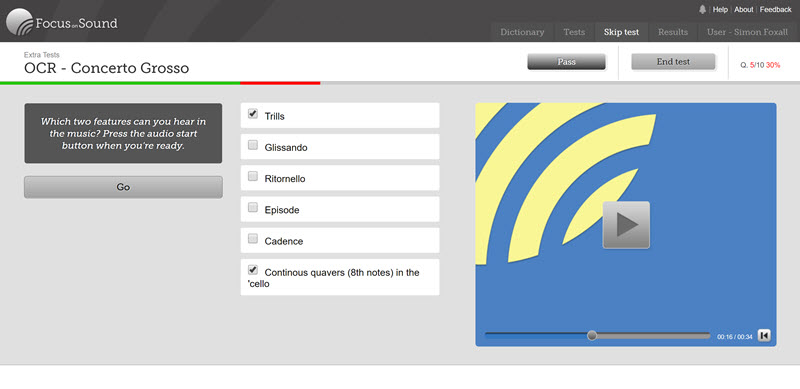
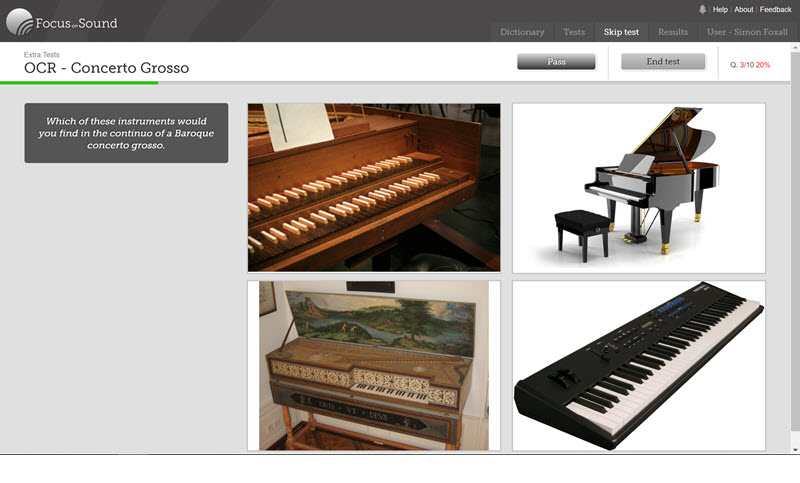
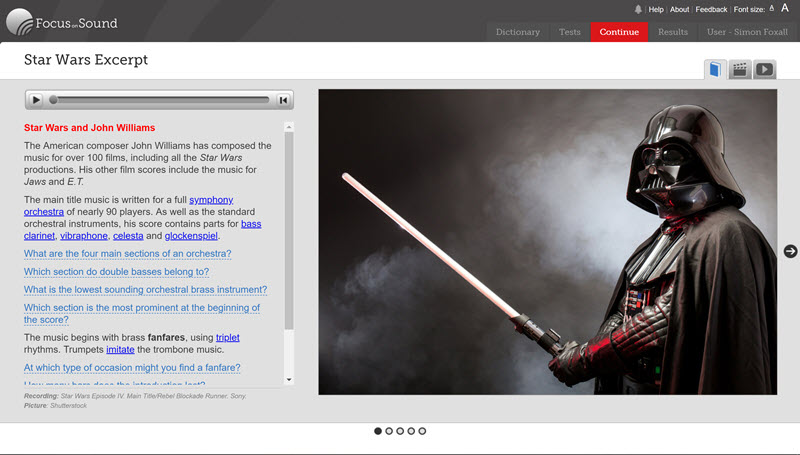
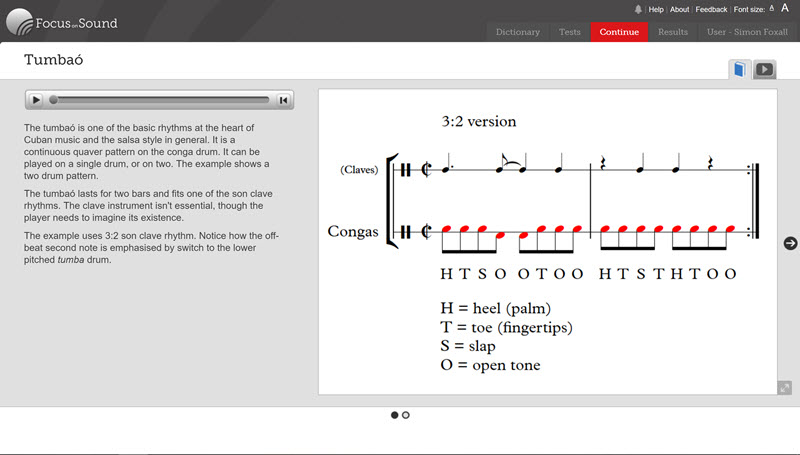
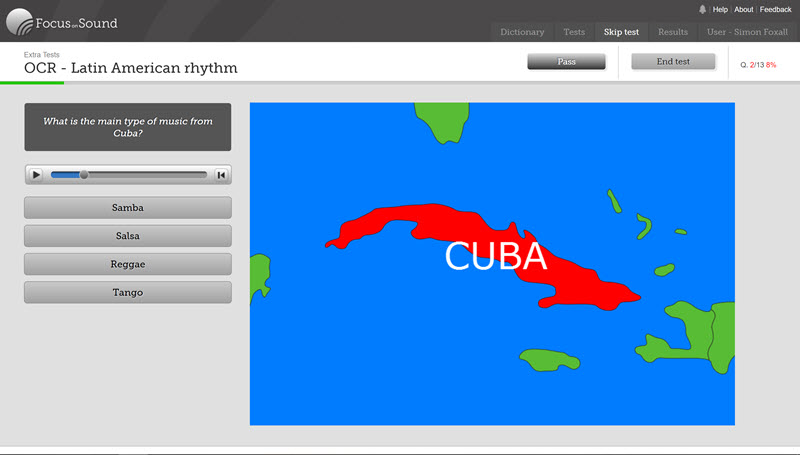
We have a set of 24 practice questions in 3 tests where the user has to fill in the missing rhythm or pitch, as in these two screenshots.
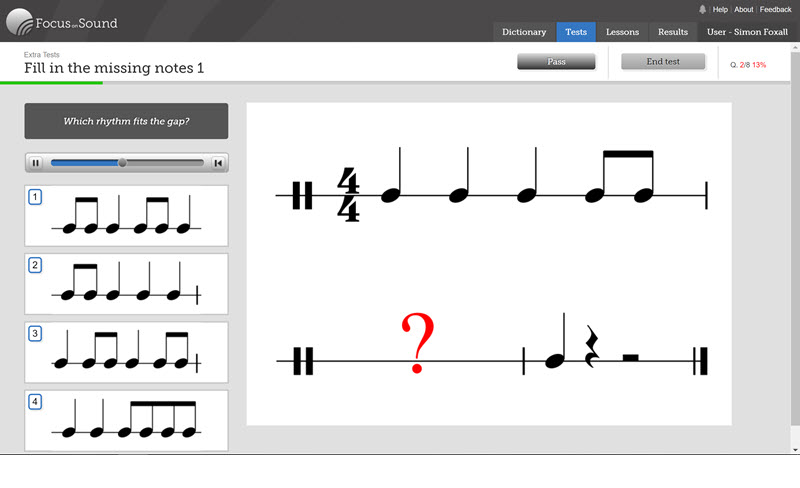
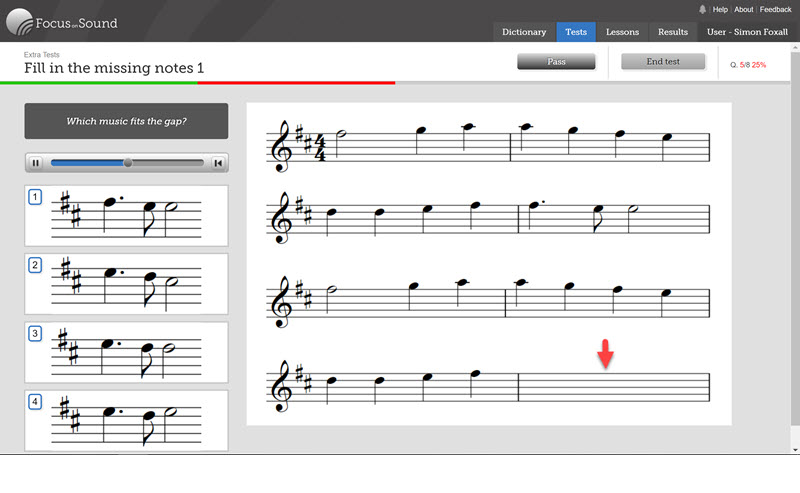
As an example, for the concerto topic we have five general pages on the concerto, two on the concerto grosso, five on the Baroque concerto, one on the Classical concerto, eight on Mozart's Piano Concerto no. 21, four on Tchaikovsky's Piano Concerto no. 1 as well as individual pages on Brandenburg 5. All topics contain auto-marked listening tests and discussion questions with model answers.
There are all kinds of lessons and listening tests relating to instruments and instrumental techniques.
There's much more material to come of course. We update the software each week.
Request free trial
Here is a topic list from 2017 (many more since!). It contains a list of all dictionary topics, tests and lessons from then.
Topic list
As well as being a senior examiner for Edexcel, the author of Focus on Sound, Dr Simon Foxall, is an experienced OCR composing examiner.
Here is an introduction to our current coverage:
GCSE
Above all these programs are designed to cover the Language for Learning terms (see p. 16-18 of the specification). Sound Words covers 650 graded terms. These include almost all of the terms in the OCR list. Students can learn, revise and test themselves until they have really secure knowledge. It's a cloud-based online program, so we constantly update the list.
Here are just a very few examples of what's covered aurally and visually in learning and tests:
Notation: Pitch names, key signatures, time signatures, ornaments and their signs: trill, turn, mordent and acciaccatura, etc.
Rhythm: Anacrusis, syncopation, dotted rhythm, metre, cross-rhythm, polyrhythm, swing, tala, son clave, chaal, etc.
Melody/pitch: Stepwise, scalic, passing note, leap, intervals, scales, raga, blues, pitch bend, glissando, etc.
Harmony: Chords, cadences, modulation, dissonance, chromatic, diatonic, atonal, drone, 12 bar blues, etc.
Tempo: All main speed indications
Dynamics: All
Articulation: Staccato, legato, pizzicato, tremolo, accent, sforzando
Instruments: Orchestral, keyboard, jazz/rock, Indian classical, Gamelan, folk, etc.
Voices: All main voices and vocal techniques, a cappella, scat, melisma, syllabic
Melodic and compositional devices: Repetition, sequence, imitation, ostinato, inversion, retrograde, riff, improvisation, call and response, walking bass, fill, etc.
Texture: Monophonic, homophonic/chordal, polyphonic, contrapuntal, unison, parallel motion, contrary motion, heterophony, etc.
Structure: Binary, ternary, rondo, variation, strophic, through composed, ground bass, canon, fugue, pop song structure, cadenza, etc.
Large structures: Concerto, symphony, sonata, oratorio, string quartet, wind quintet, concerto grosso, etc.
Musical Periods: Baroque, Classical, Romantic, Modern, etc.
Dance: Tango, jig, slip, reel, hornpipe
AS/A2 specification
Most of the specification requirements are taught and tested within the two programs, including:
Aural recognition of:
- primary and secondary triads, together with inversions
- seventh chords
- rate of harmonic change
- standard harmonic progressions within a clearly-defined tonal system
- techniques of melodic repetition, variation and change within a defined harmonic pattern
- modulation to closely-related tonal centres
- tonal devices such as sequence and pedal
The Expressive use of Instrumental Techniques
This part of the syllabus is covered extensively in both programs. There are over 70 instrumental techniques described and tested in Sound Words, most accompanied by video demonstrations. Instruments covers around 180 instruments and groups from the areas of classical, jazz/rock, folk and world music.
The specification expects candidates to:
- acquire knowledge about their own and other instruments
- develop their awareness of the sounds and performing techniques which characterise their own and other instruments
- develop an understanding of the principal contexts in which they are, or have been, used.
These features are covered in detail in the two programs.
Aural extracts
The programs are ideal preparation for this kind of question. The AS syllabus, for instance lists these requirements, all covered by the programs:
- the use of instrumental playing techniques (including articulation), instrumentation or texture
- phrasing and structure
- techniques of melodic construction
- techniques of musical repetition and change
- melodic dissonance
- primary and secondary triads, inversions and sevenths
- tonal devices such as dominant pedal and sequence
- cadences and closely-related modulation
- ornamentation.
For AS level so far, we have extensive coverage of Mozart's clarinet concerto, including an annotated score that changes pages in sync with the recording.
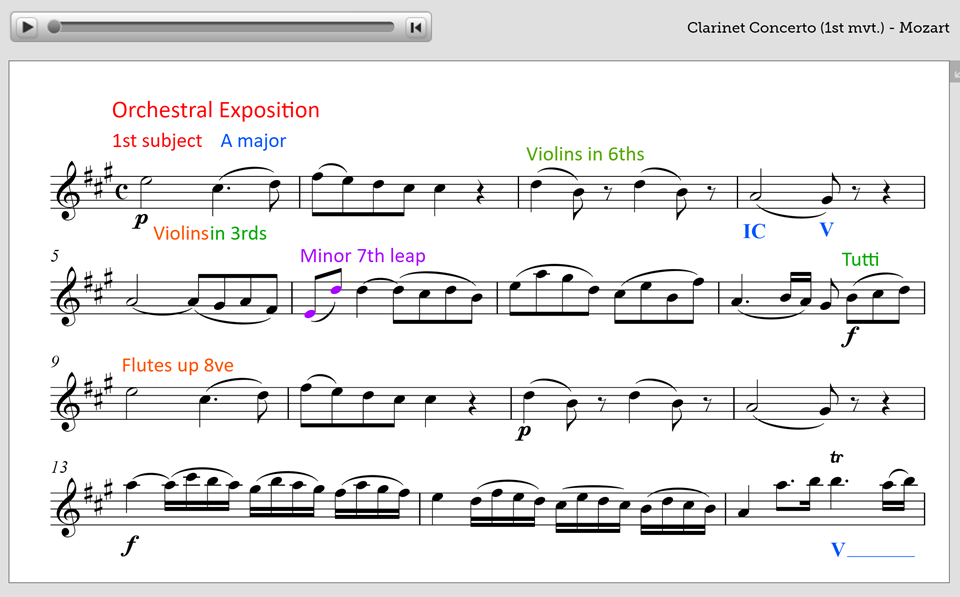
UK Prices Request free trial version Video demo
